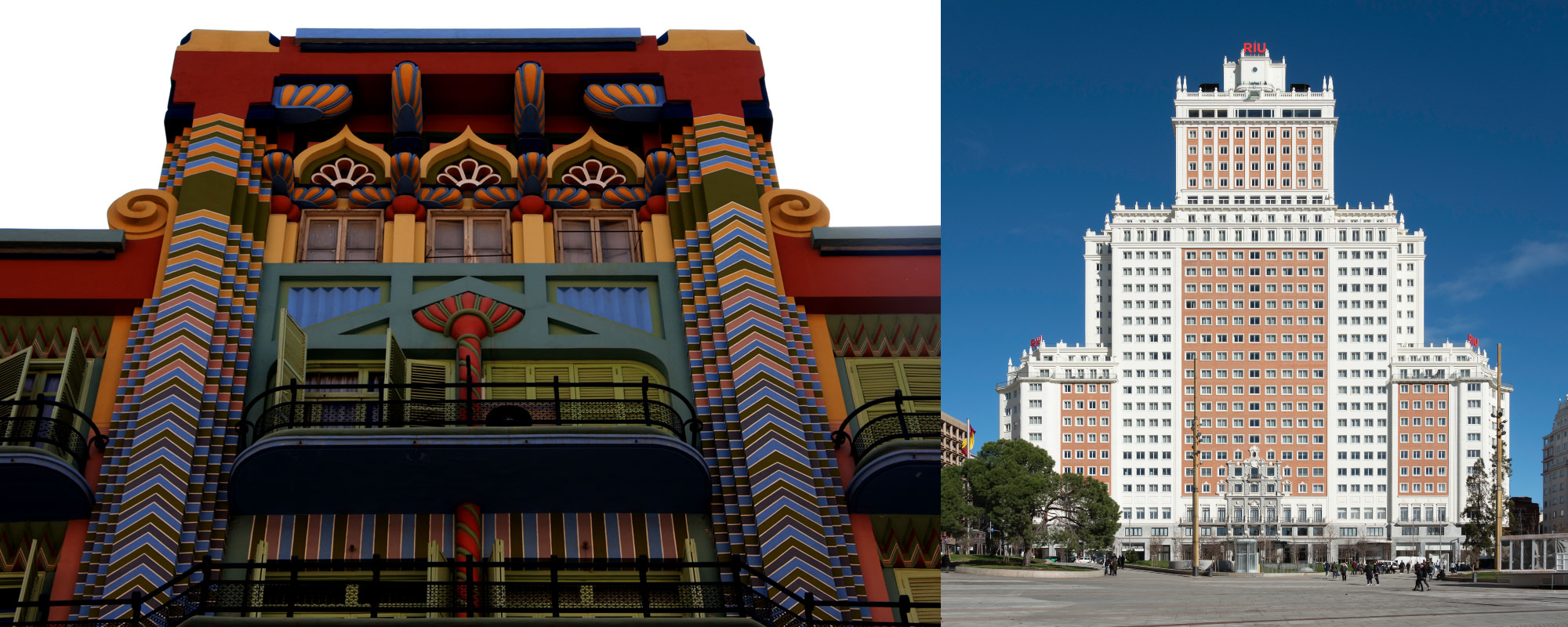WHEN someone once asked Prime Minister Clement Attlee to define socialism, he replied that he couldn’t – but he knew it when he saw it.
Art Deco is much the same. Hard to pin down, easy to love.
Elon Musk is trying to reinvent it for the 21st century, but Deco has been turning heads for over a hundred years.
So what is it?
It’s a style, a spirit, a vibe – something that says how things should look.
Whether it’s a skyscraper or a cigarette case, Art Deco insists that everything we make can, and should, be beautiful.
And oddly enough, the more troubled the times, the more elegance we seem to crave.
Emerging in the aftermath of World War One, the ‘arts decoratifs’ movement – from which Art Deco takes its name – was born during one of the bleakest decades in modern history.
Think Fred Astaire and Ginger Rogers dancing through the Great Depression. Nobody wanted films about hardship. They wanted ocean liners, tuxedos and big bands.
Deco gave the world beauty with bold lines and big ideas. It’s sleek. It’s modern. It’s escapism.
Today, Elon Musk calls his ‘robovan’ a new Deco icon. But back in the early 20th century, it was countries like Spain that gave the movement its original flair.
Despite staying neutral in both World Wars, Spain suffered its own traumas – economic collapse, political assassinations, and a brutal civil war.
As the old ways collapsed – monarchy, Church, and rural life – cities like Madrid, Barcelona and Valencia boomed, and with them came a burst of architectural creativity.
Even in chaos, elegance found a home.
Spain became a canvas for modern materials and ambitious visions – a land where Deco’s bold lines could shine in the sunlight.
From concrete to chrome, from decorative staircases to sweeping facades, Spanish architects were building a future they could believe in.
Here are the Olive Press’s Top 12 Art Deco buildings in Spain, each one telling its own story of ambition, innovation, and sheer style.
1. Casa Judia, Valencia (1930)

A bold burst of colour and geometry on Calle Castellon. Known as the ‘Jewish House’, this private residence is a candy box of intricate detail, with star-shaped windows and bright mosaics. Designed by Juan Francisco Guardiola Martinez, it’s one of Valencia’s most photographed examples of pure Spanish Art Deco.
2. Edificio Sagasta, Malaga (1903)

A graceful corner building with rounded balconies and ornate ironwork, Sagasta is a striking example of early Deco blending with Modernist touches. Built by Jeronimo Cuervo, it set the tone for Malaga’s architectural leap into the 20th century. Still a landmark today, especially when bathed in that golden Costa del Sol light.
3. Colisseu Balear, Palma de Mallorca (1928)

This bullring may surprise Deco lovers, but its elegant arches and repeating motifs make it a strong Deco contender. Built just a few years before the Spanish Civil War, it fuses tradition with modernity – showing that even in sport, Spain wasn’t afraid to flirt with futuristic design.
4. Hospital de Maudes, Madrid (1916)

Originally a charity hospital, this luminous white building blends functionality with Gothic and Deco lines. Designed by Antonio Palacios – a Deco pioneer – it stands as one of Madrid’s most imaginative and humanist structures. Today, it’s a cultural venue, its inner courtyards just as beautiful as the facades.
5. Palau Guell, Barcelona (1888)

Gaudi before Gaudi got weird. This early gem leans into symmetry and clean lines more than his later works, with iron grilles and curving stone forms hinting at the Deco spirit.

Commissioned by industrial tycoon Eusebi Guell, it’s a masterclass in restrained luxury with a Catalan twist.
6. Casa Fuster, Barcelona (1908)

Now a five-star hotel, Casa Fuster is one of Passeig de Gracia’s crown jewels. Designed by Lluis Domenech i Montaner, it bridges Art Nouveau and Art Deco in dazzling fashio.

Marble, glass and curvaceous windows make this building both a relic and a revelation.
7. Edificio Espana, Madrid (1948)

An imposing vertical statement at Plaza de Espana, this skyscraper (once the tallest in Spain) is a late-Deco titan. With its wedding-cake tiers and American-style ambition, it captures a nation emerging from civil war, looking up – quite literally – to a brighter future.
8. Fundacio La Caixa, Palma de Mallorca (1903)

Originally the Gran Hotel, this building is a riot of ornament and innovation. Designed by Modernist architect Lluis Domenech i Montaner, it reflects early Deco confidence with its ceramic tiles, sweeping staircases and expressive carvings.

Today it hosts cultural events and exhibitions – a Deco temple with brains and beauty.
9. Casa Matesanz, Madrid (1923)

A stunner on Gran Via, Casa Matesanz is a textbook example of urban Deco. Clean vertical lines, wide windows, and decorative panels make it a standout in Madrid’s most famous street. Designed by Antonio Palacios (again), it’s another sign of his vision for a new, elegant Spain.
10. No. 4, Avenida Rosaleda, Malaga (1932)

A residential jewel with its curved balconies, geometric railings and playful use of space. This apartment building is tucked away but rewards the curious eye. It shows that Deco wasn’t just for the elites – it was also for everyday elegance in the sunniest parts of Spain.
11. Teatro Rialto, Valencia (1939)

Once a cinema, this charmer on Plaza del Ayuntamiento was designed by the architect Cayetano Borso di Carminati and was taken over by the Valencian government who converted it into a theatre in the 1980s.
12. Edificio Hardisson, Santa Cruz de Tenerife (1937)

Classic Art Deco style, this residential four storey block by Enrique Rumeu de Armas was built in 1937. The symmetrical distribution of openings and trapezoidal floor plan were highly original and and is a great example of Rumeu’s classicist rationalist style.
READ MORE:








